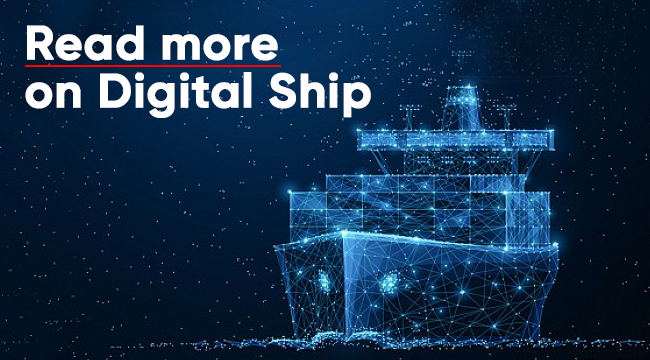A selection of anti-COVID face masks with sailor ranks and insignia from Marine Digital. ⚓️
We wish you all good health in the New Year!
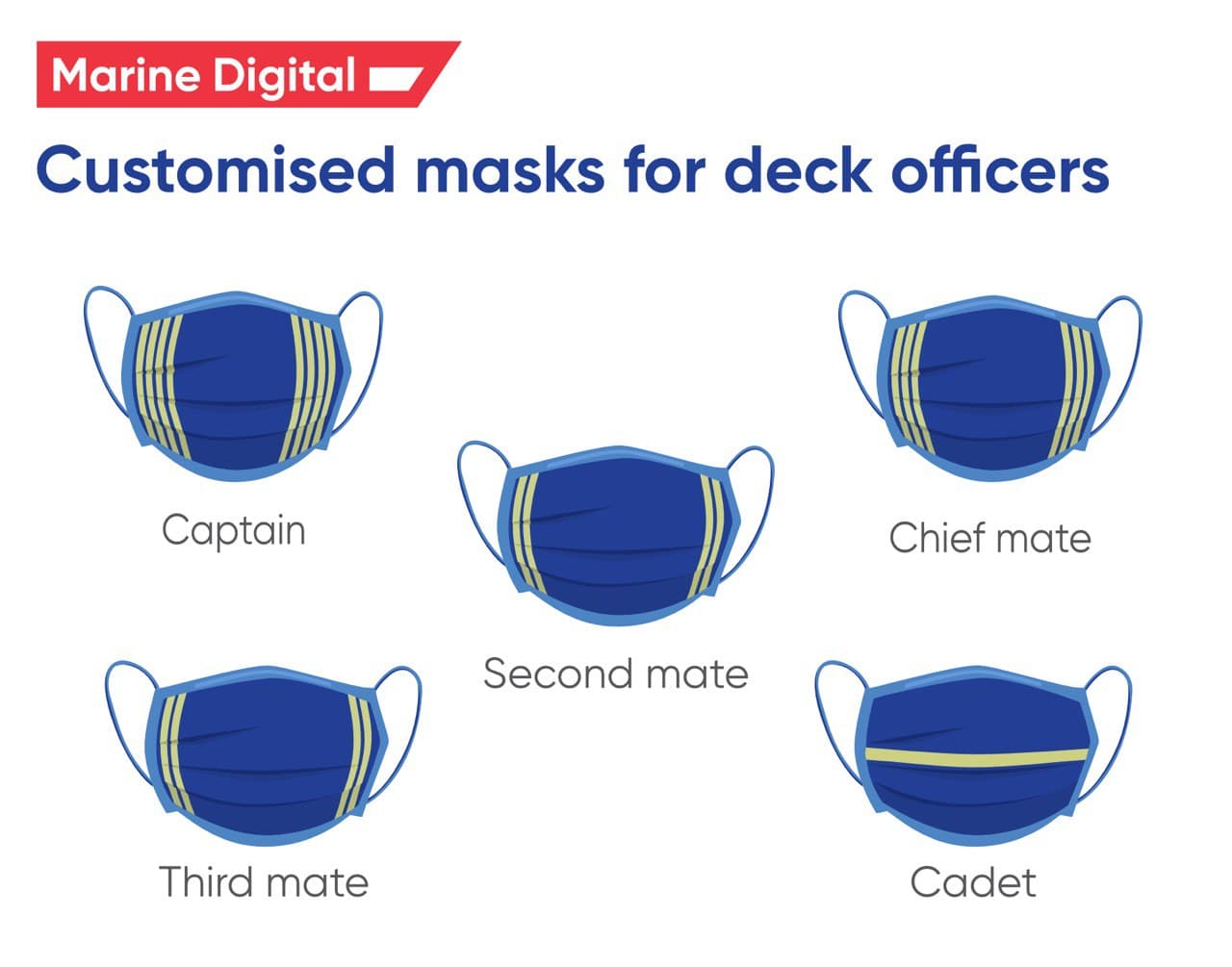
Windsock
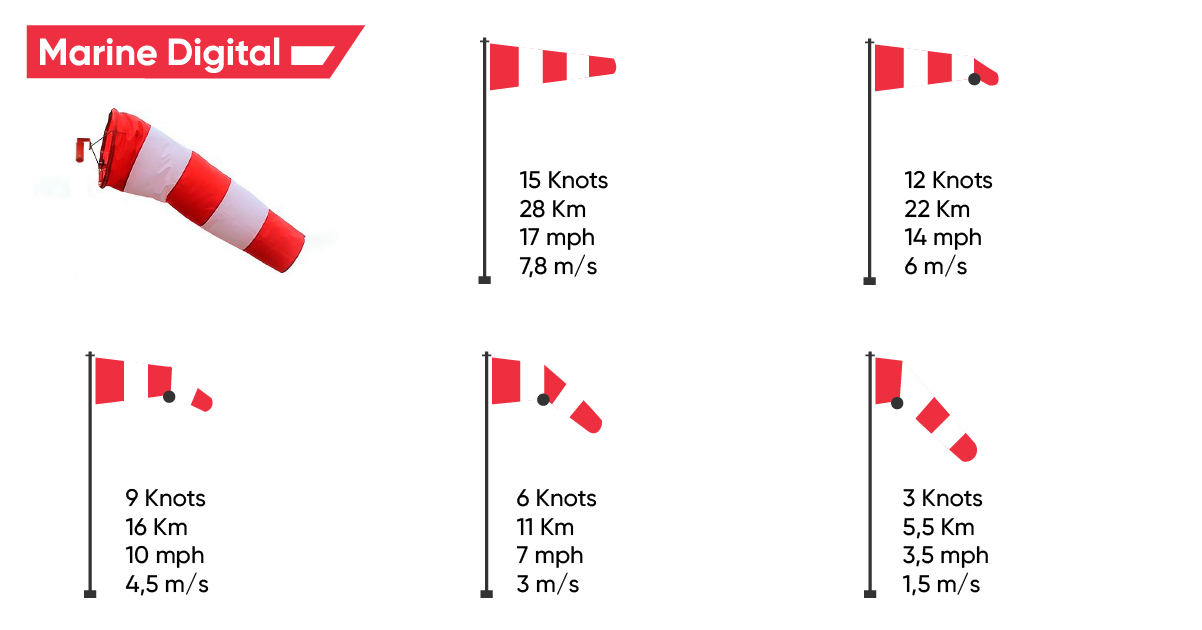
A windsock is a tapered woven textile tube used to measure wind direction and speed.
Alternating bands of bright orange and white are used to estimate wind speed. Each lane adds 3 knots to the calculated wind speed. However, some round frame mounts cause the windsocks to remain open at one end, indicating a speed of 3 knots, even if the anemometers do not indicate wind speed. A fully extended windsock suggests winds of 15 knots (28 km/h; 17 mph) or higher.
Container data
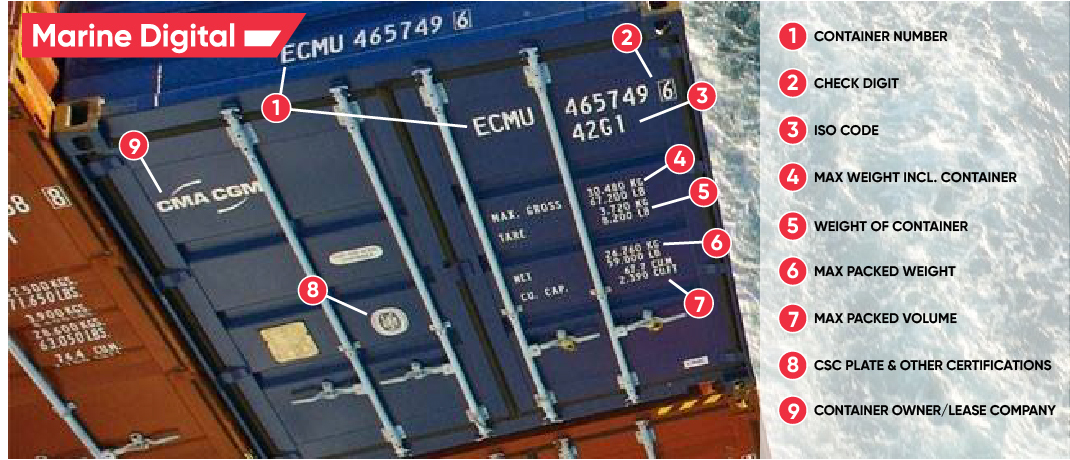
1. Container Number
2. Check Digit
3. Iso Code
4. Max Weight Incl. Container
5. Weight Of Container
6. Max Packed Weight
7. Max Packed Volume
8. Csc Plate & Other Certifications
9. Container Owner/Lease Company
Shipping Conventions
What Events Triggered Them?
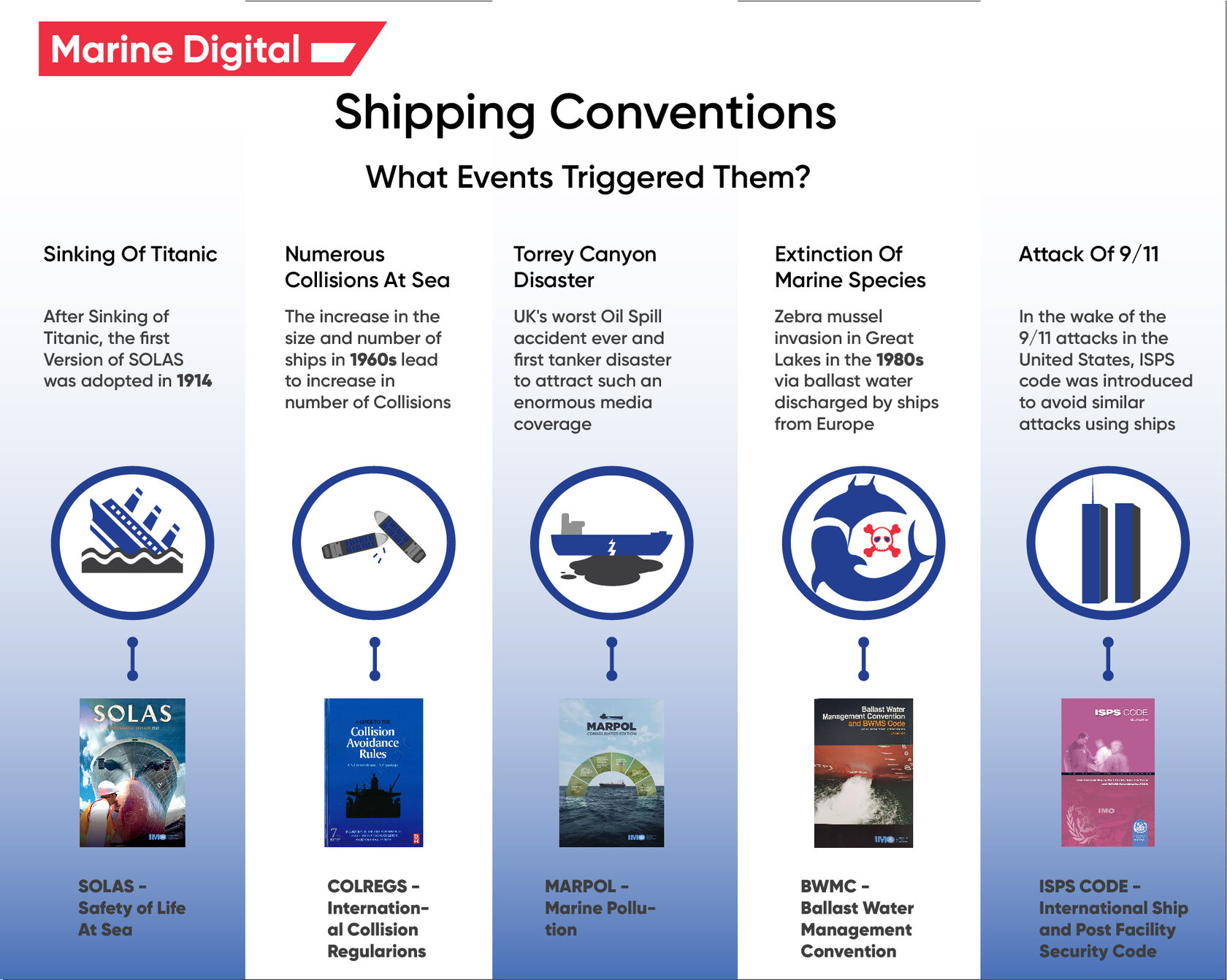
Sinking Of Titanic
After the Sinking of Titanic, the First Version of SOLAS was adopted in 1914
Numerous Collisions At Sea
The increase in the size and number of ships in the 1960s lead to an increase in the number of Collisions
Torrey Canyon Disaster
UK's worst Oil Spill accident ever and first tanker disaster to attract such an enormous media coverage
Extinction Of Marine Species
Zebra mussel invasion in Great Lakes in the 1980s via ballast water discharged by ships from Europe
Attack Of 9/11
In the wake of the 9/11 attacks in the United States, ISPS code was introduced to avoid similar attacks using ships
SOLAS - Safety of Life At Sea
COLREGS - International Collision Regulations
MARPOL - Marine Pollution
BWMC - Ballast Water Management Convention
ISPS CODE - International Ship and Port Facility Security Code
How the number of crews in the maritime industry has changed?
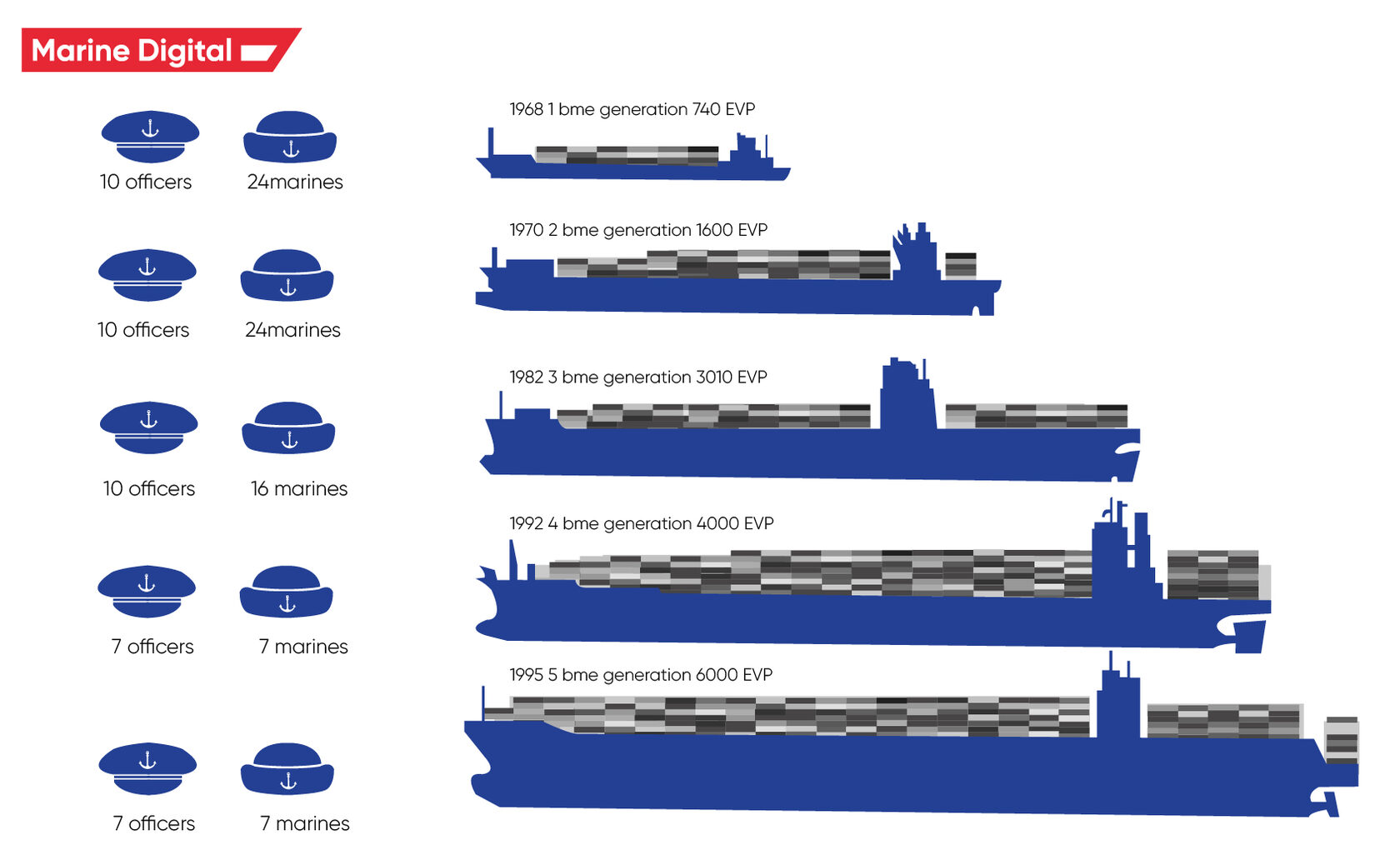
1968 1 bme generation 740 EVP - 10 officers, 24marines
1970 2 bme generation 160 EVP - 10 officers, 24 marines
1982 3 bme generation 3010 EVP - 10 officers, 16 marines
1992 4 bme generation 4000 EVP - 7 officers, 7 marines
1995 5 bme generation 6000 Evp - 7 officers, 7 marines
Types of Knot
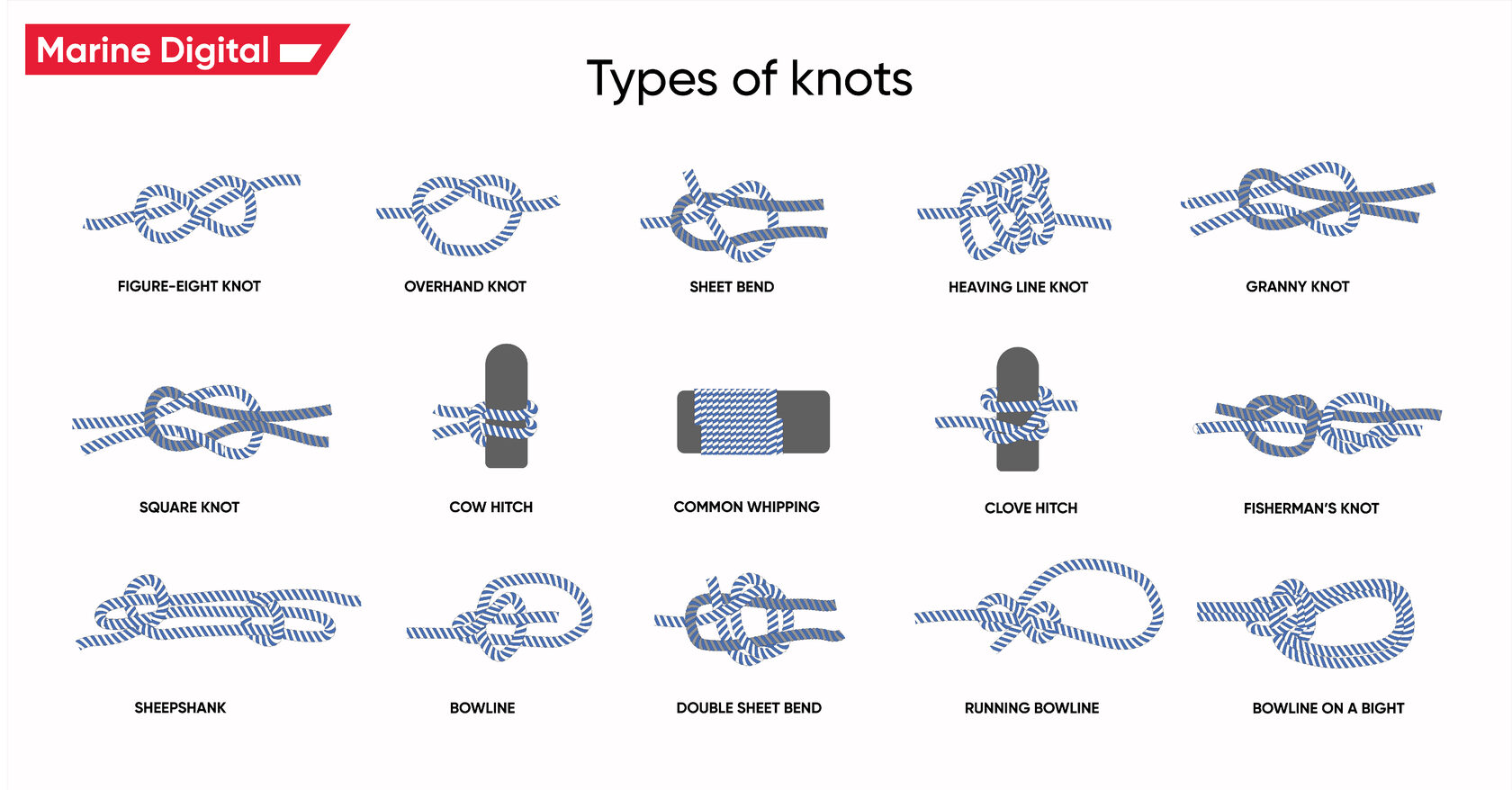
Evolution of Containerships
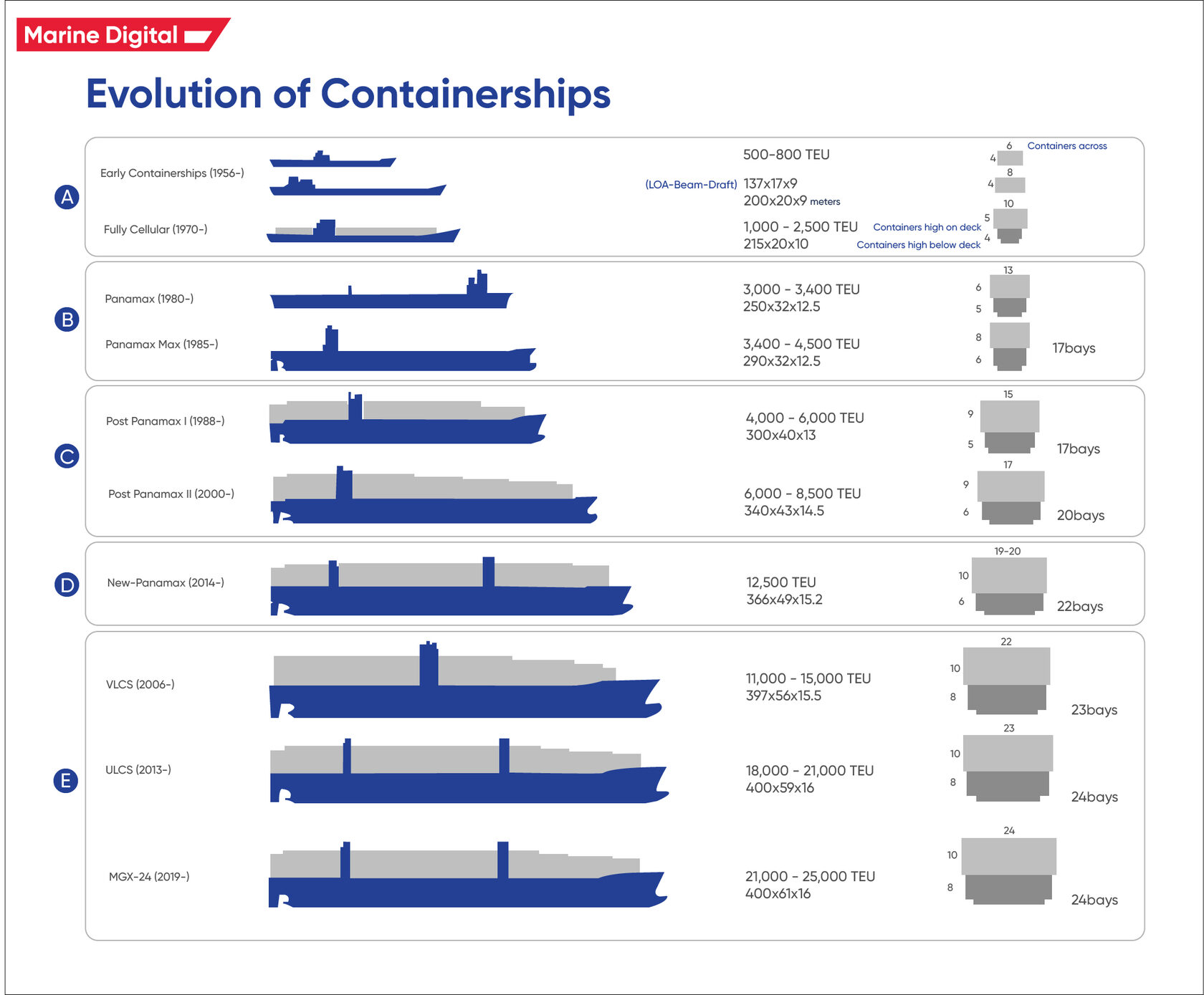
1. Early Containerships (1956-) 500 - 800 TEU
2. Fully Cellular ( 1970-) 1,000 - 2,500 TEU
3. Panamax (1980-) 3,000 - 3,400 TEU
4. Panamax Max (1985-) 3,400 - 4,500 TEU
5. Post Panamax I (1988-) 4,000 - 6,000 TEU
6. Post Panamax II (2000-) 6,000 - 8,500 TEU
7. New-Panamax (2014-) 12,500 TEU
8. VLCS (2006-) 11,000 - 15,000 TEU
9. ULCS (2013-) 18,000 - 21,000 TEU
10. MGX-24 (2019-) 21,000 - 25,000 TEU
How do sailors and ordinary people see different types of vessels?
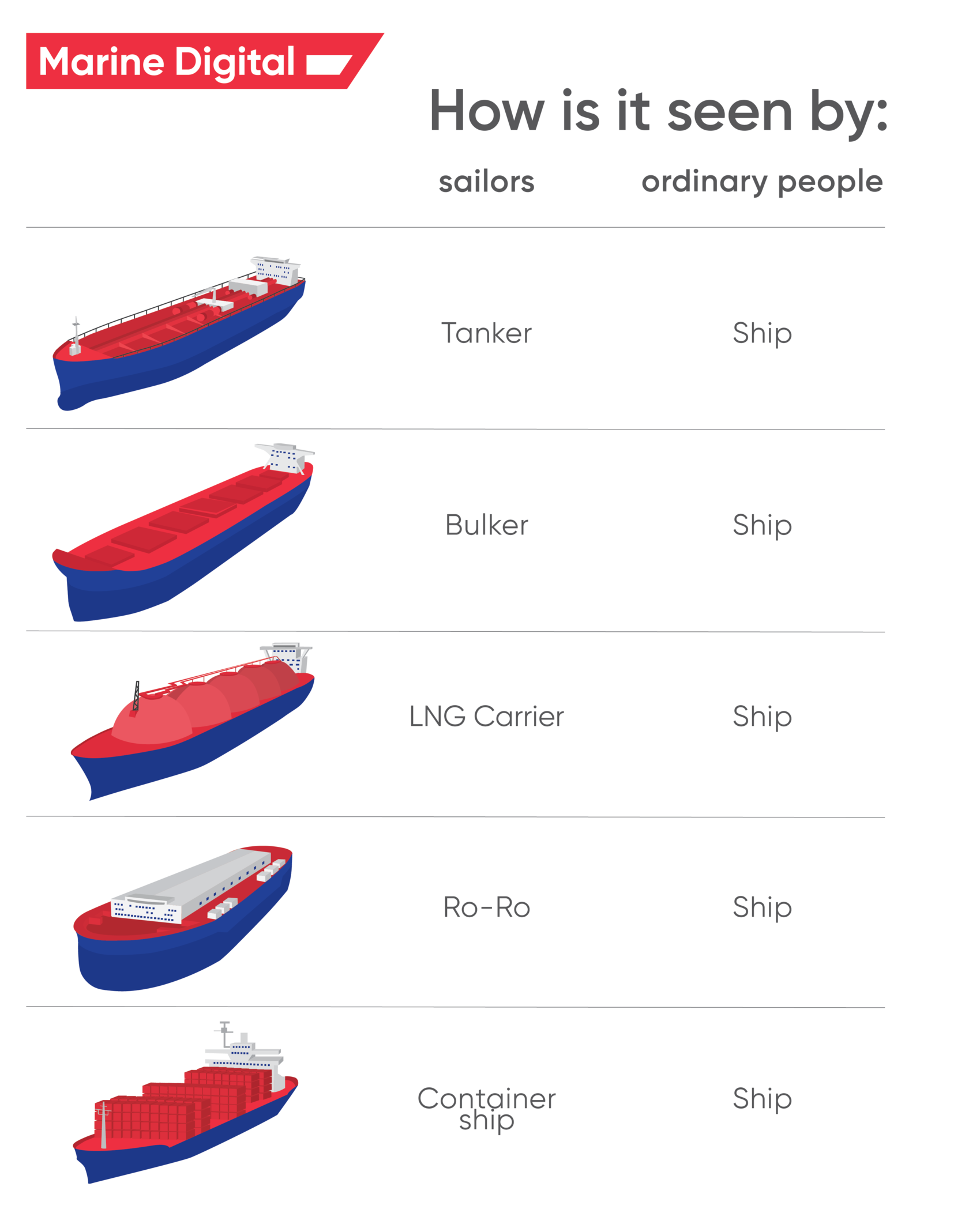
We are collecting curious facts about the maritime and shipping industry. This publication will be updated with NEW INFOGRAPHICS periodically. (!UPDATED!)
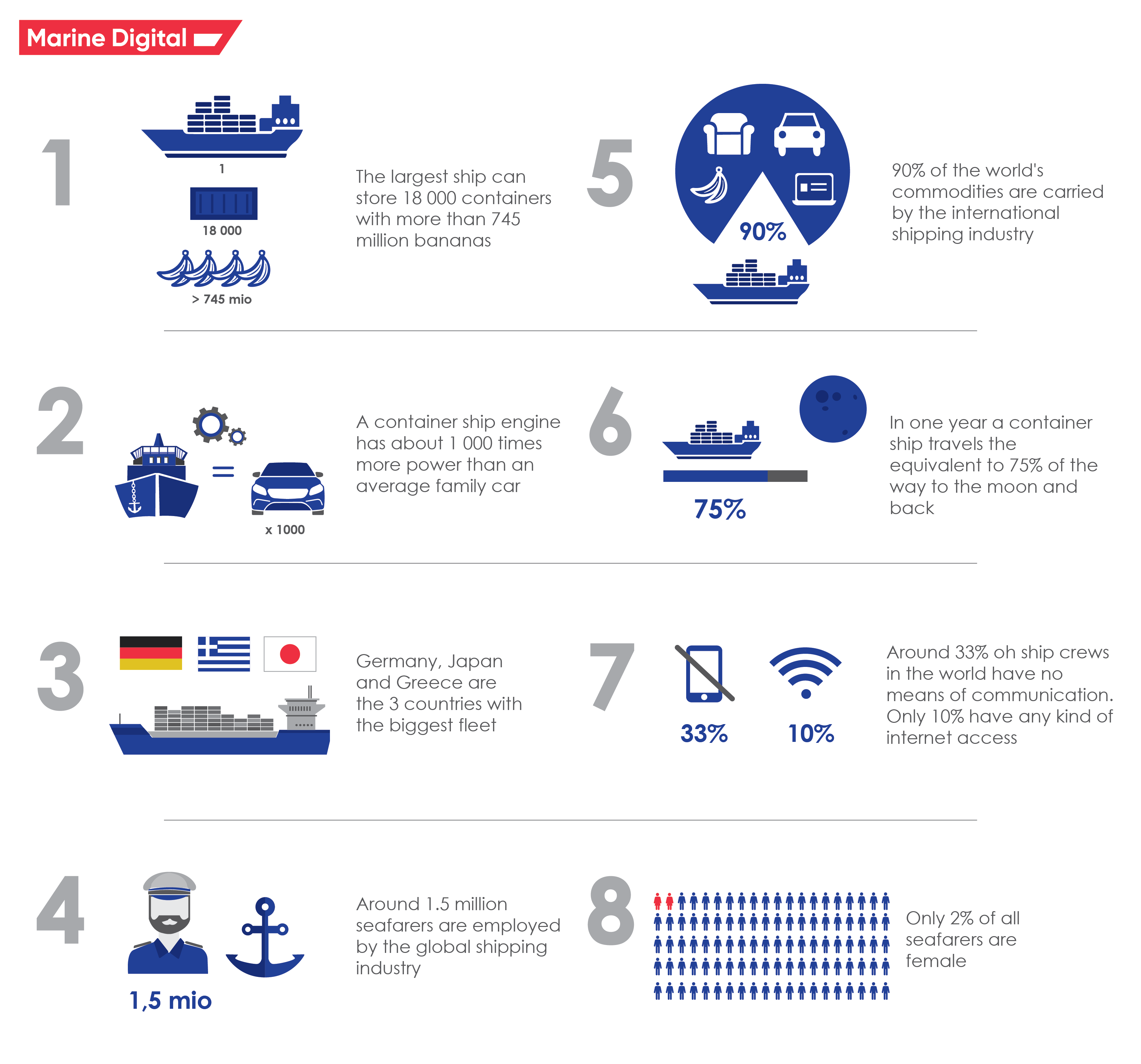
1. The largest ship can store 18 000 containers with more than 745 million bananas.
2. A container ship engine has about 1 000 times more power than an average family car.
3. Germany, Japan, and Greece are the 3 countries with the biggest fleet.
4. Around 1.5 million seafarers are employed by the global shipping industry.
5. 90% of the world's commodities are carried by the international shipping industry.
6. In one year a container ship travels the equivalent to 75% of the way to the moon and back.
7. Around 33% of ship crews in the world have no means of communication. Only 10% have any kind of internet access.
8. Only 2% of all seafarers are female.
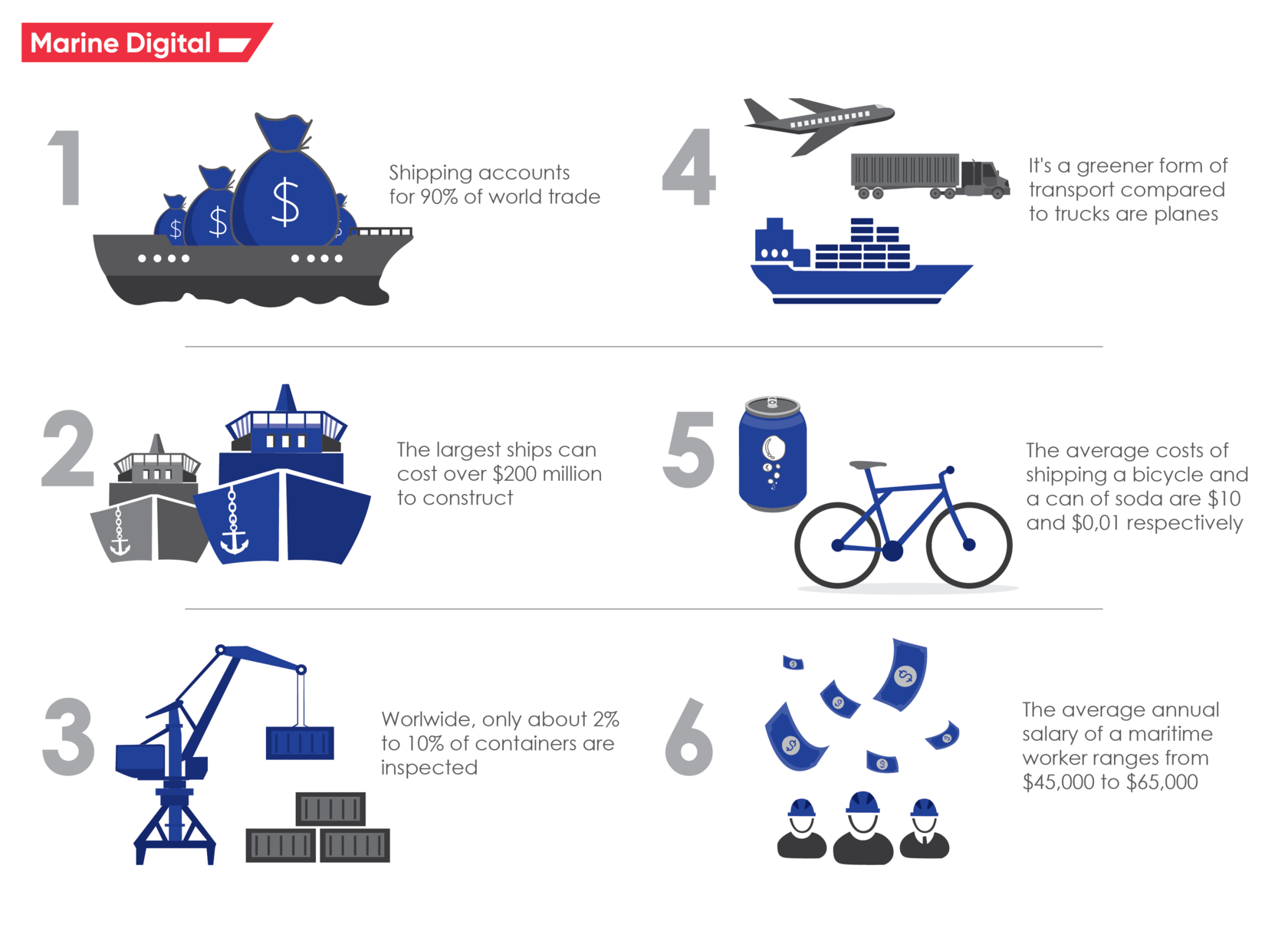
1. Shipping accounts for 90% of world trade.
2. The largest ships can cost over $200 million to construct.
3. Worldwide, only about 2% to 10% of containers are inspected.
4. It's a greener form of transport compared to trucks are planes.
5. The average costs of shipping a bicycle and a can of soda are $10 and $0,01 respectively.
6. The average annual salary of a maritime worker ranges from $45,000 to $65,000.
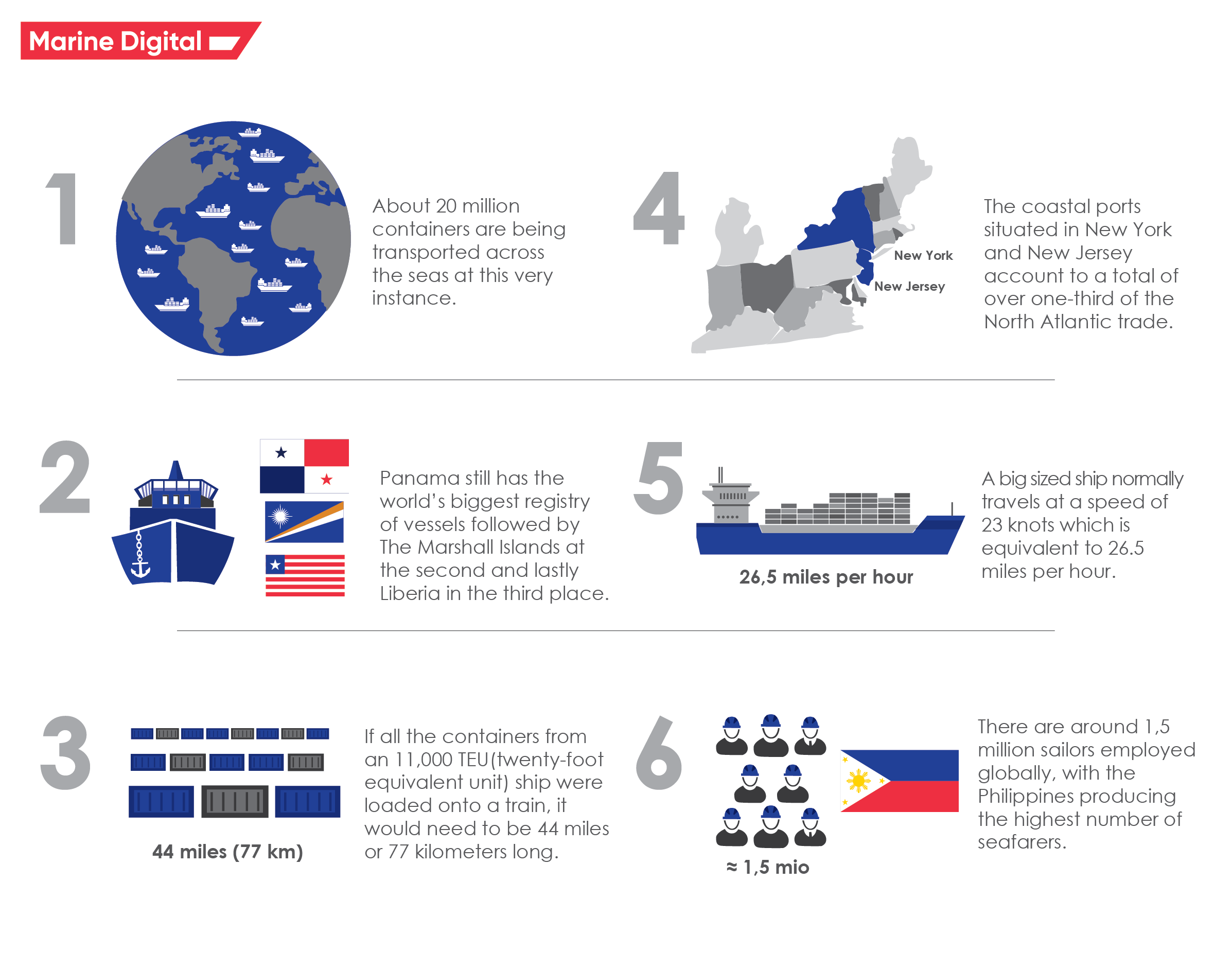
1. About 20 million containers are being transported across the seas at this very instance.
2. Panama still has the world’s biggest registry of vessels followed by The Marshall Islands in the second and lastly Liberia in the third place.
3. If all the containers from an 11,000 TEU(twenty-foot equivalent unit) ship were loaded onto a train, it would need to be 44 miles or 77 kilometers long.
4. The coastal ports situated in New York and New Jersey account for a total of over one-third of the North Atlantic trade.
5. A big-sized ship normally travels at a speed of 23 knots which is equivalent to 26.5 miles per hour.
6. There are around 1,5 million sailors employed globally, with the Philippines producing the highest number of seafarers.
Another 6 facts about shipping in 2020:
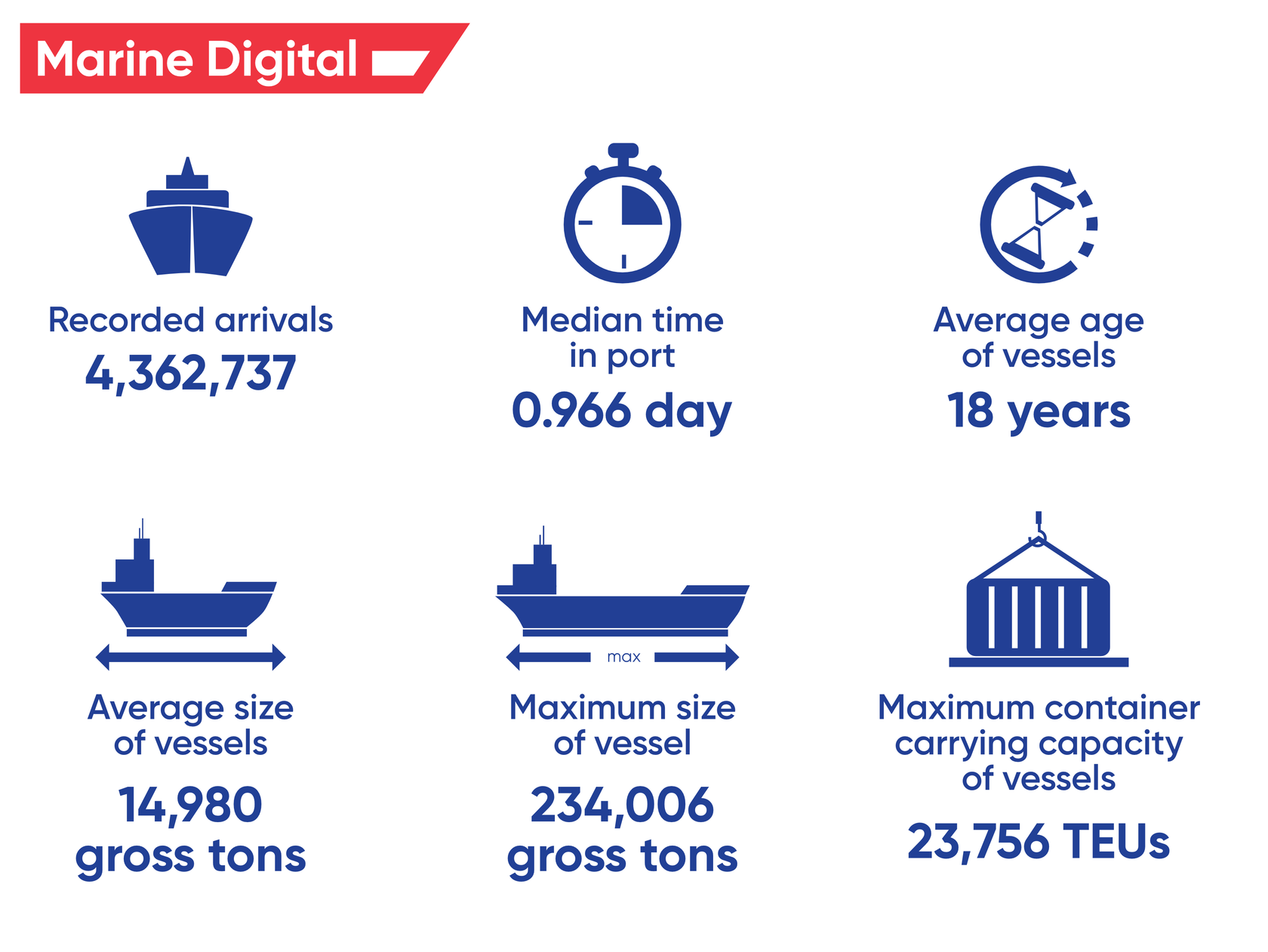
1. 4,362,737 recorded arrivals
2. Median time in port: 0,966 day
3. Average age of vessel is 18 years
4. Average size of vessels is 14,980 gross tons
5. Maximum size of vessel is 234,006 gross tons
6. Maximum container carrying capacity of vessels are 23,756 TEUs
